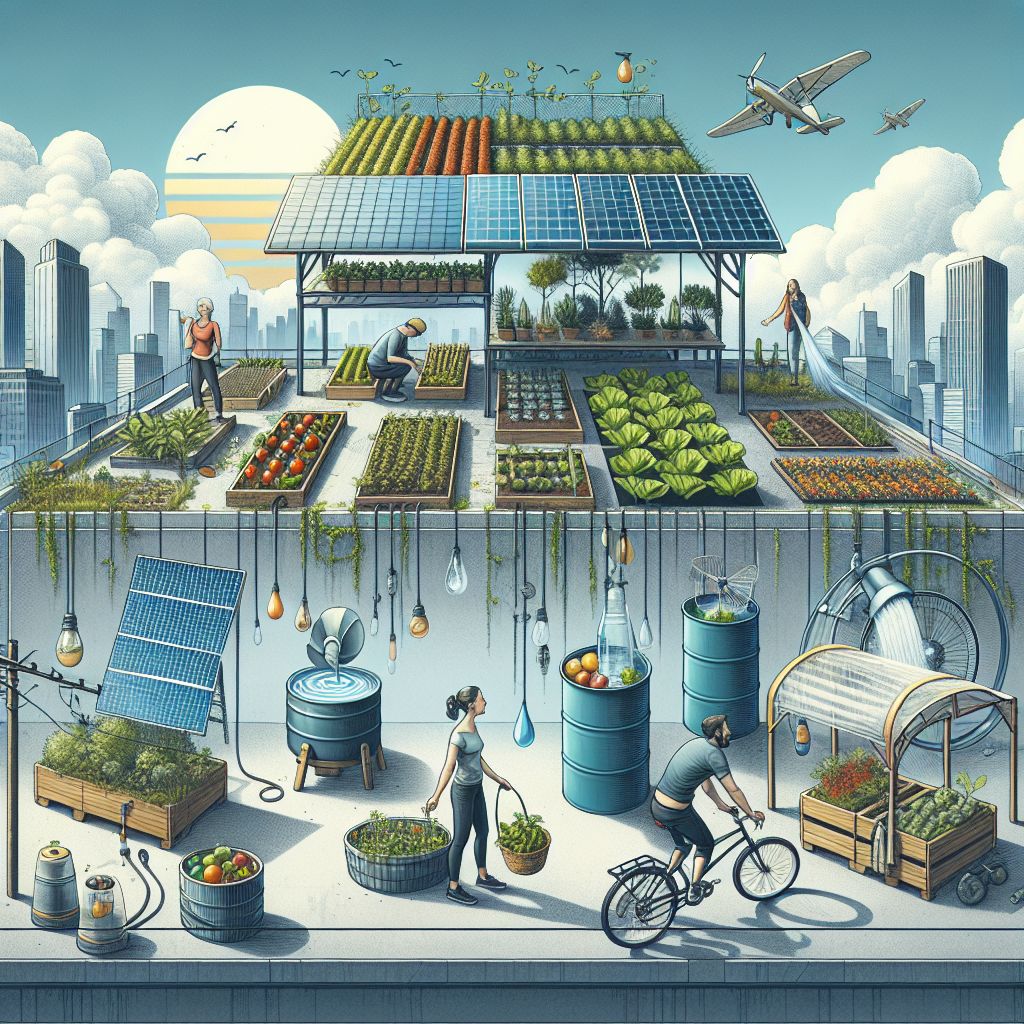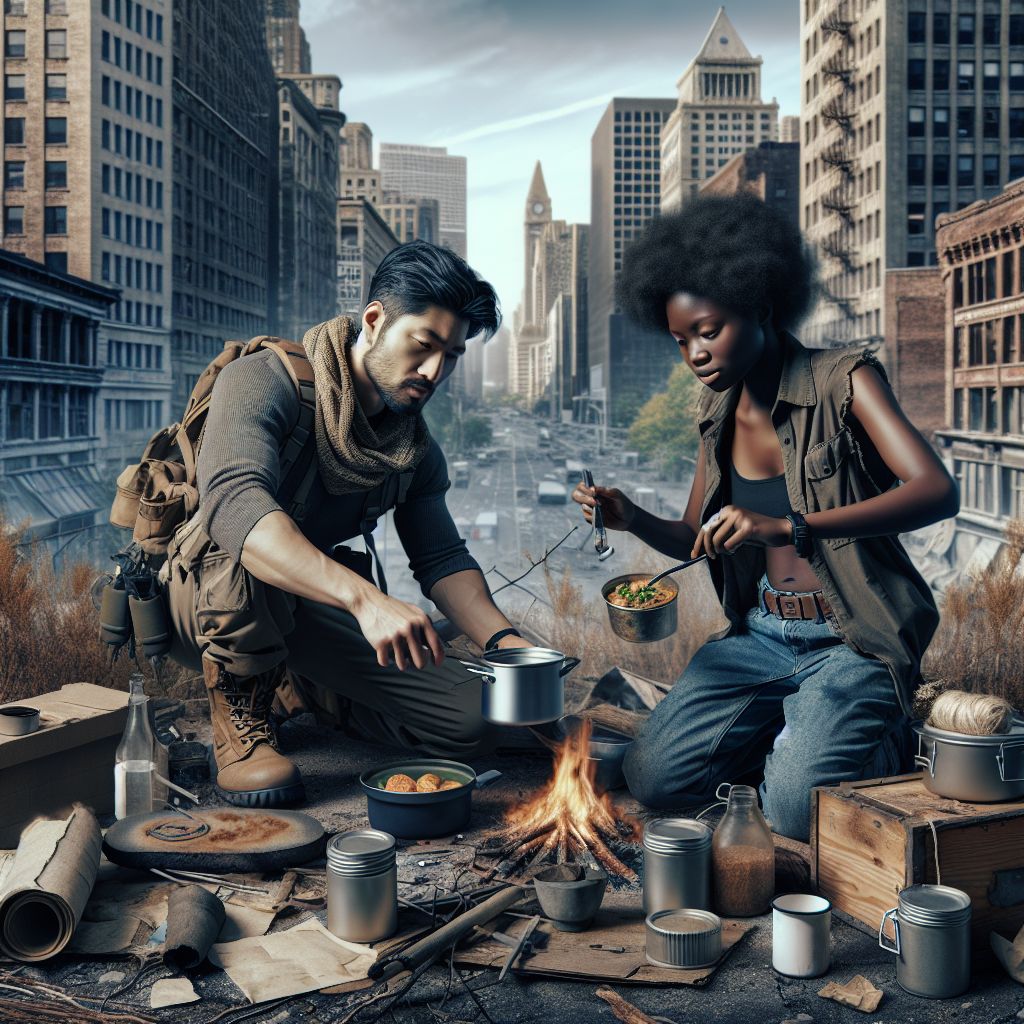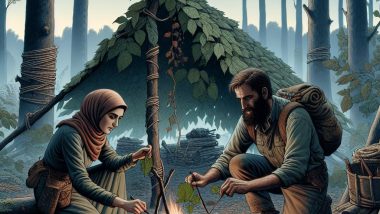Surviving in a city is a different beast entirely. You’re in a world made of concrete and steel, not trees and dirt. In a city, there are more people, more buildings, and fewer resources. You can’t just go out and find food in the forest because there is no forest. And you can’t just build a fire in the middle of the street. You need a different kind of plan, one that takes into account the unique challenges of urban survival.
If you’re an experienced prepper or just beginning to think about the ‘what if’ scenarios, the correct information can be your greatest weapon. That’s where urban prepper strategy books come in handy, providing a plethora of knowledge that is specific to your surroundings. But with so many choices available, which ones can you rely on for your protection?
Quick Look
-
Getting to grips with the unique requirements of urban prepping.
-
Key skills for surviving in a city environment.
-
Reviews of the best urban prepper strategy books for 2024.
-
Creating a comprehensive urban survival library.
-
Practical steps to turn your knowledge into a robust urban survival plan.

Learn the Urban Survival Basics for 2024
Urban survival is about more than just hoarding resources; it’s about cultivating a mindset that values preparedness and adaptability. The right book can be a guide, a mentor, and a resource all in one. It can teach you how to navigate the urban landscape, how to secure your home, and how to protect your family in the face of uncertainty.
It’s not all about catastrophic events, though. Urban survival guides also tackle common emergencies, teaching you how to get ready for things like blackouts, water scarcity, or even losing your way in the city. They show you how to stay inconspicuous, how to locate supplies in unexpected locations, and above all, how to keep your cool when things don’t go your way.
How is Urban Prepping Unique?
Urban prepping has a few significant differences from wilderness survival. In urban environments, you’re dealing with a large number of people, which means resources can run out fast. You also have to deal with complicated social structures and potentially increased crime rates during crises.
On top of that, city settings are heavily reliant on their infrastructure. When the electricity goes out or the supply chains stop working, a city survivalist needs to have backup plans in place. This could involve creating your own electricity, coming up with new methods of communication, or being able to clean water without the need for public utilities.
Adjusting Survival Tactics to City Living
Being prepared in the city isn’t just about having the right equipment; it’s about understanding how to use your environment to your benefit. The city is full of resources if you know where to look. From collecting rainwater on rooftops to vertical gardening, city preppers must be innovative and resourceful.
Moreover, community is a vital factor in urban survival. Establishing connections with your neighbors and nearby businesses can form a support system when it’s most crucial. Exchanging skills and resources can mean the difference between merely surviving and flourishing after a disaster.
As a result, the top urban prepper books offer not just personal survival tactics, but also guidance on building community resilience. They instruct you on how to find potential allies and how to add to a group survival strategy.

Book 1: The Ultimate Prepping & Survival Handbook
For those looking to dip their toes into urban prepping, the “The Ultimate Prepping & Survival Handbook” is a great starting point. It provides a comprehensive overview of urban emergency preparation, focusing on practical skills that are easy to learn and implement. The book highlights the importance of risk assessment in an urban environment and gives a detailed guide on how to create a personal emergency plan.
The guidebook is systematically arranged, so you can quickly locate the information you need. It doesn’t only cover what to do in the event of a disaster, but also the steps you should take ahead of time. This entails instructions for assembling an urban survival kit that goes above and beyond the essentials, including tools specifically designed for urban settings.
Book 2: The Concrete Jungle Survival Manual
“The Concrete Jungle Survival Manual” brings a fresh perspective to urban prepping, focusing on unique survival strategies that are especially beneficial in highly populated regions. This guide delves into situations that are frequently ignored, such as maneuvering through a city during a power outage or locating clean drinking water in a polluted urban environment.
This book is chock-full of clever ideas, such as how to make signal mirrors out of common items or use city buildings for shelter. Readers will enjoy the detailed pictures and easy-to-follow instructions that make even the most complicated methods seem doable.
Book 3: SAS Urban Survival Handbook
For those who are planning for the long haul, “SAS Urban Survival Handbook” is a must-have. It explores tactics for surviving in a city after a catastrophe, discussing subjects such as city agriculture, trade systems, and community development.
Survival is not the only goal; it’s about preserving a certain standard of living when the typical city luxuries are no longer accessible. This handbook is for the prepper who wants to do more than just survive the initial disaster, but also wants to flourish in the aftermath.
What You’ll Learn: A Breakdown of the Best Books
Each of these books offers something different, but they all have one thing in common: they’re all about getting you ready for unexpected situations in the city. Here’s a breakdown of what you can expect to learn from each one:
Book 1: Covered Key Skills and Strategies
-
Planning for emergencies and assessing personal risk.
-
Assembly of an advanced urban survival kit.
-
Personal safety and securing your home techniques.
Book 2: Urban Survival Innovations
-
Urban scenario tactics and tools that are unconventional.
-
Signaling for help and navigating without the use of modern technology.
-
Methods for purifying water in an urban environment.
Book 3: Methods for Long-Term Urban Sustenance
-
Renewable food sources and urban farming.
-
Creating a barter economy with local businesses and neighbors.
-
Post-disaster community rebuilding strategies.

Creating Your Urban Survival Library
Now that you know about the best urban prepper books, the next step is to create your survival library. This collection should include quick reference materials, specialized manuals, and comprehensive guides. Your library will provide you with confidence and knowledge as you navigate through the complexities of urban preparedness.
When you’re picking out books, think about the unique difficulties you might encounter in your city. Is it susceptible to certain types of natural disasters? Are there specific societal problems that could worsen during a crisis? Make sure your book collection is designed to answer these questions and covers a wide variety of skills and situations.
Picking the Right Books for Your Urban Prepper Kit
Picking the right books for your urban prepper kit is more than just choosing the bestsellers. Look for books that:
-
Stay current with modern urban survival tactics.
-
Provide clear, actionable steps that are simple to implement.
-
Include real-world case studies and examples.
-
Are authored by people with reputable backgrounds in survival and emergency readiness.
Remember, knowledge is power, but only when it’s accessible. Store your survival library in a secure but easily accessible location. And most importantly, take the time to read and practice the skills you acquire. The more comfortable you are with the material, the better prepared you’ll be when you need to apply it.
Marrying Knowledge with Practical Equipment
Books provide a wealth of knowledge, but when it comes to the crunch, you need equipment that can withstand the trials of urban survival. It’s about striking a balance between what you know and what you have at your disposal to handle emergencies. The correct gear, coupled with the tactics from your urban prepper books, can be the game changer.
Think of your survival gear as an extension of your knowledge. Every item in your kit should serve a purpose, whether it’s for first aid, communication, or shelter. Your gear is there to help you execute the strategies you’ve learned about. And remember, the best gear is the gear you know how to use. Make sure you know each item in your kit, practice using it, and understand its limitations.
First and foremost, your equipment should be tailored to your city environment. A multi-tool may be more beneficial than a hatchet, and a water filter bottle may save your life when tap water becomes unsafe. As a result, equip yourself with items that align with the urban survival tactics and scenarios you’ve learned from your books.
Medical Supplies for City Survival
There’s no room for debate: a comprehensive first aid kit is a must. The risk of injury is everywhere, but in a city, getting to a hospital or waiting for an ambulance could take longer than usual, or even be impossible, during a disaster. Your first aid kit needs to have the basics like bandages and disinfectant, but also supplies for injuries that are more likely in a city, like splints for broken bones from falling debris or accidents.
Here are some must-haves for your city survival kit:
-
Bandages and gauze in a variety of sizes
-
Antiseptic wipes and creams
-
Painkillers and anti-inflammatory drugs
-
Tourniquets for severe bleeding
-
Burn gel and dressings
-
Splints and medical tape for immobilizing injuries
-
Personal medications and copies of prescriptions
Remember, it’s not enough to just have these items. You need to know how to use them properly. This is where your urban prepper books come in handy, as they provide you with the knowledge to confidently administer first aid.
Urban food and water Sustainability
When traditional supply chains fail, urban preppers must rely on sustainable food and water sources. This could involve setting up a rainwater collection system or growing a small vegetable garden on your balcony or rooftop. Your survival guidebooks will instruct you on how to establish these systems, but here are some basic tips to get you started:
-
Recognize the sources of water in your local area and have a reliable method to purify it, such as water purification tablets or filters.
-
Learn the basics of hydroponic or container gardening to grow your own food in small spaces.
-
Understand the principles of food preservation, such as canning and dehydrating, to extend the shelf life of your harvest.
Self-Defense and Home Fortification
In an urban crisis, your personal safety and the security of your home can be at risk. Self-defense doesn’t just mean physical combat; it’s also about making your home a less appealing target. Your survival books will provide detailed strategies for fortifying your home, but here are a few starting points:
-
Invest in sturdy locks for your doors and windows, and think about adding security bars or impact-resistant film to your windows.
-
Have a self-defense tool on hand that isn’t too obvious, such as pepper spray or a tactical flashlight.
-
Designate a room in your house as a safe room that can be your final line of defense if necessary.

Putting What You’ve Learned into Practice: Your Plan for Urban Survival
While it’s one thing to read and collect information, the real test of an urban survivalist is being able to put that information to use. Your survival plan should be a dynamic document that changes as you learn more and gain more experience. It should lay out your plans for everything from evacuating to long-term survival in a city.
Begin by plotting your everyday paths and pinpointing possible safe spots or resource locations along the way. Have a copy of your strategy in your survival pack and ensure your family members know it. Periodically revisit and revise your strategy as you pick up new skills and get new equipment.
How to Create Your Urban Survival Strategy: A Step-by-Step Guide
It may seem like a challenging task to create a complete urban survival strategy. But, by dividing it into smaller, more manageable steps, you can make sure that you don’t miss anything. Here’s a step-by-step guide to help you begin:
-
Evaluate your threats: Think about the specific dangers in your city environment, such as natural disasters or power failures.
-
Collect information: Use city prepper books to learn about the best methods and strategies.
-
Assemble your kit: Put together a survival kit with equipment that matches the strategies you’ve learned.
-
Create a strategy: Make a detailed strategy that includes immediate actions, communication, shelter, and food.
-
Train and rehearse: Regularly rehearse your survival skills and review your strategy to stay ready.
And finally, remember that the purpose of city prepping is not just to survive, but to flourish. By arming yourself with the right knowledge and equipment, you can confidently handle any city challenge. Take action now and begin creating your city survival strategy for 2024 and beyond.


